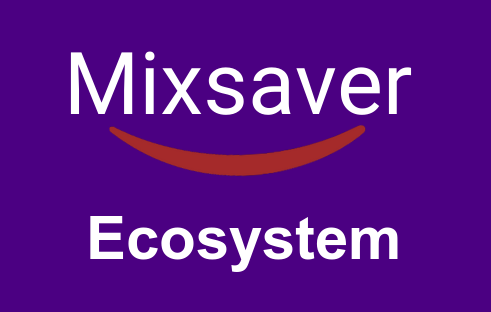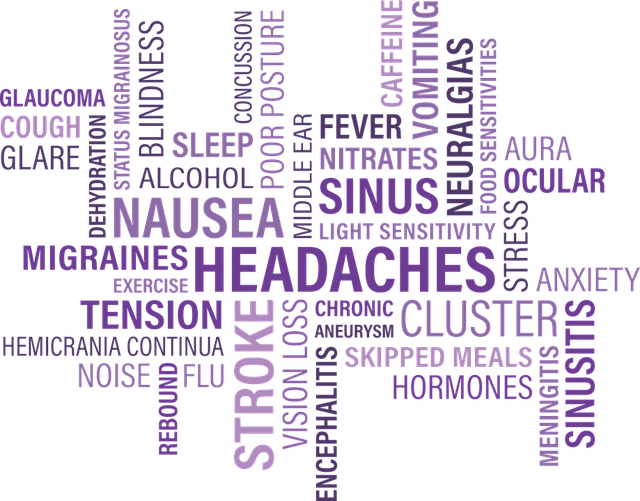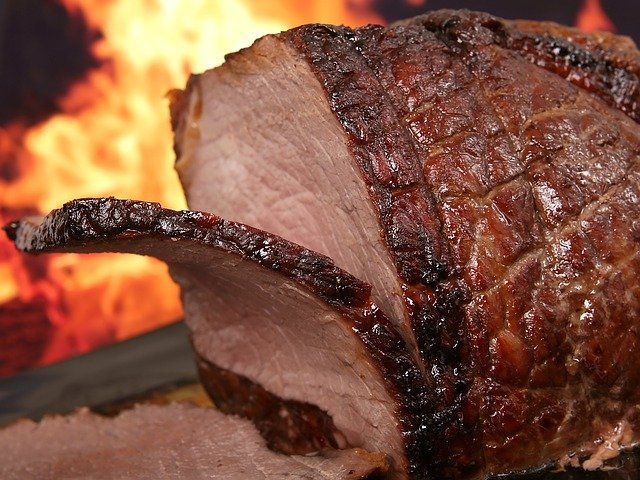Energy flow, energy loss
The Sun is the principal source of energy input to biological systems. The Earth receives 2 main types of energy from the Sun: light (solar) and heat. Photosynthetic plants and some bacteria can trap light energy and convert it into chemical energy.
Non-cyclical nature of energy flow
Heterotrophic organisms obtain their energy by eating plants or animals that have eaten plants. So all organisms, directly or indirectly, get their energy from the Sun. The energy is passed from one organism to another in a food chain but, unlike water and elements such as carbon and nitrogen, energy does not return in a cycle. Energy give out by organisms is lost to the environment.
Energy is lost at each level in the food chain, as in the examples below.
- Energy lost through the process of respiration (as heat)
- Energy used up for movement (to search for food, find a mate, escape from predators…).
- Warm-blood animals (birds and mammals) maintain a standard blood temperature – they lose heat to the environment.
- Warm-blood animals lose heat energy in faeces and urine.
- Some of the material in the organism being eaten is not used by the consumer, for example a locust does not eat the roots of maize, and some of the parts eaten are not digestible.
Even plants do not make use of all the light energy available to them. This is because some light:
- is reflected off shiny leaves
- is the wrong wavelength for chlorophyll to trap
- passes through the leaves without passing through any chloroplasts
- does not fall on the leaves.
On average, about 90% of the energy is lost at each level in a food chain. This means that in long food chains, very little of the energy entering the chain through the producer is available to the top carnivore. So there tend to be small numbers of top carnivores. The food chain below shows how energy reduces through the chain. It is based on maize obtaining 100 units of energy.
|
maize |
à |
locust à |
lizard |
à |
snake |
|
100 units |
10 units |
1 unit |
0.1 unit |
On shorter food chains, less energy is lost.
Try this
Figure below shows the flow of energy through a complete food chain:
- a) Which form of the Sun’s energy is trapped by the producer? [1 mark]
b) Into which energy form is the Sun’s energy converted when it is trapped by the producer? [1 mark]
- a)The first consumer has received 6000 units of energy. How many units of energy (X on the figure) have been passed to the second consumer? [1 mark]
b) How many units of energy (Y on the figure) are lost from the third consumer to the decomposers. [1 marks]
- a) Suggest why the proportion of the energy intake which a producer loses to the environment (20%) is smaller than that lost to the environment by a first consumer (30%). [2 marks]
b) Many countries have difficulty in producing enough food for their population. How might it help to overcome this problem if humans were always fed as first consumers, rather than second or third consumers? [3 marks]
Answer
- a) Light (or solar) energy
b) Chemical energy
- a) 1200 units
b) 48 units
- a) The consumer may be warm-blooded, so some energy is lost as heat. Consumers usually move around to find food, a mate, or escape from predators, which uses up energy, but producers do not move.
b) Feeding as a first consumer involves eating plants. Less energy is lost to the environment when feeding at this level, so food production is more efficient in terms of energy conservation.
Food chain
Food chain is a chart showing the flow of energy (food) from one organism to the next beginning with a producer.
Examples:
-
- o mahogany tree à caterpillar à song bird à hawk
- o maize à locust à lizard à snake
-
- A food chain usually starts with a photosynthetic plant, which gains its energy from the Sun.
- The arrows used to link each organism to the next represent the direction of energy flow. They always points towards the ‘eater’, and away from the plant.
- The feeding level is known as the trophic level.
- Plant are producers (they make/produce food for other organisms).
- Animals that eat plants are primary consumers (a consumer is an ‘eater’). They are also called carnivores.
Examiner’s tips
-
- Make sure you can write a food chain involving 3 consumers, with the arrows in the correct direction.
- Don’t include the Sun (it is not an organism).
- Always start with the producer on the left of diagram.
- Practice labeling each trophic level in your food chain under the organisms (producer, primary consumer, etc.).
- Don’t waste time drawing plants and animals: this will not get you any extra marks.
Common misconceptions
Marks are often lost when students write out food chains and webs because they draw the arrows the wrong way round or put the chain back-to-front (or both). The following example was seen in a recent paper:
jackal à sheep à grass
This student is suggesting that grass eats sheep and sheep eat jackals!
Food web
Food web is a network of interconnected food chains showing the energy flow through part of an ecosystem.
These are a more accurate way of showing feeding relationships than food chains, because most animals have more than one food source. For example, in the food webs in figure below, the leopard feeds on baboons and impala.
The leopard can be placed at 2 different trophic levels:
-
- secondary consumer (feeding on imlala)
- quaternary or fourth level consumer (feeding on baboons).
Another example of food web.
Food webs are easily unbalanced, especially if one population of organisms in the web dies or disappears. This may happen for a number of reasons, including:
-
- over–predation or hunting
- disease
- pollution
- use of pesticides
- lack of food (or other resources)
- emigration.
For example, in the food web here, if all the baboons were killed by hunters the leopard would have only impala to eat. So the impala population would decrease. The scorpion population may increase because of less predation by baboons, but if there are more scorpions they will eat more locusts, reducing the locust population, and so on.
Try this
Figure below shows a food web:
- Select appropriate organisms form the food web to complete each column in the table below. [4 marks]
|
Consumer |
Producer |
Carnivore |
Herbivore |
|
|
Organism 1 |
||||
|
Organism 2 |
- Ladybirds eat aphids. A very large number of ladybirds arrive in the habita where these organisms live. Predict some of the possible effects this could have on the organisms in the above food web.
[6 marks]
Answer
a)
- 6 suggestion such as:decrease in aphids because ladybirds eat aphids
-
- increase in ivy because there will be fewer aphids feeding
- decrease in wrens because there are fewer aphids to eat
- decrease in caterpillars because the wrens now have only caterpillars for food
- increase in oak trees because there will be fewer aphids feeding
- increase in hogweed because there will be fewer aphids feeding
- increase in goldfinches because there is more hogweed to eat.
There are other possible suggestions.
Food pyramids of numbers, biomass and energy
A food pyramid shows the relative sizes of different components at the various trophic levels of a food chain. There are three types of ecological pyramid we use: numbers, biomass and energy.
In a food pyramid, each trophic level in a food chain is represented by a horizontal bar, with the width of the bar representing the number of organisms, the amount of biomass or the amount of energy available at that level. The base of the pyramid represents the producer; the second level is the primary consumer; and so non.
- Pyramids of numbers
A pyramid of numbers shows the relative number of organisms at each stage of a food chain.
Example 1: clover → snail → thrush → hawk
Clover is a plant and it is the producer in this food chain. Its bar goes at the bottom of the pyramid.
Energy is lost to the surroundings as we go from one level to the next, so there are fewer organisms at each level in this food chain. A lot of clover is needed to support the snail population. A thrush eats lots of snails, and a hawk eats lots of thrushes, so the population of hawks is very small.
Other pyramid shapes
Sometimes the pyramid of numbers doesn't look like a pyramid at all. This could happen if the producer is a large plant such as a tree, or if one of the animals is very small. Remember, though, that whatever the situation, the producer still goes at the bottom of the pyramid.
Here are two examples like this:
Example 2: Oak tree → Insects → Woodpecker
An oak tree is very large so many insects can feed on it.
Example 3: Grass → Rabbit → Flea
Fleas are very small and lots of them can feed on a rabbit.
- Pyramids of biomass
Sometimes a pyramid of numbers is not the best way to represent a food chain. In this case a pyramid of biomass (the dry mass of an organism) is a better diagram to use. It shows the total mass of organisms at each stage of a food chain.
In general, all producers have a higher biomass than the primary consumer, so a pyramid will always be produced.
The total energy (and biomass) present at a lower tier of the pyramid, must be greater than the higher tiers in order to support the energy requirements of the subsequent organisms.
Pyramid of numbers and pyramid of biomass
- Pyramids of energy
Pyramid of energy shows amount of energy trapped per unit time and area at each stage of a food chain.
A normal-shaped pyramid is always produced because there is a reduced amount of energy at each successive level.
Food chain and energy efficiency
In term of conversations of energy, there is an increased efficiency in supplying green plants as human food and a relative inefficiency in feeding crop plants to animals.
Short food chains are more efficient than long ones in providing energy to the top consumer. Below are two food chains and energy values for each level in them. Both food chains have a human being as the top consumer.
maize → cow → human unit of energy 100 10 1
maize → human
unit of energy 100 10
Ten times more energy is available to the human in the second food chain than in the first. In the second food chain, the human is a herbivore (vegetarian). But eating parts of a cow provide humans with other nutrients, as well as those we gain energy from – it would be very difficult to persuade everyone to become vegetarian for the sake of energy efficiency.
Some farmers try to maximize meat production by reducing movement of their animals (keeping them in pens or cages with a food supply) and keeping them warm in winter. This means less stored energy is wasted by the animals.
Why food chains usually have fewer than 5 trophic levels?
As the energy is passed along the chain, each organism uses some of it. So the further along the chain you go, the less energy there is. The loose of energy along the food chain limits the length of it. There rarely more than 5 links in a chain, because there is not enough energy left to supply the next link. Many food chains only have 3 links.
Nutrient cycles - Carbon and water cycles
Most of the chemicals that make up living tissue contain carbon. When organisms die the carbon
is recycled so that it can be used by future generations.
Four main processes are involved:
photosynthesis, respiration, decomposition combustion.
- Carbon cycle
Carbon cycle
-
- Carbon enters the atmosphere as CO2 from respiration and
combustion.
Credit: BBC Bitesize
-
- CO2 is absorbed by producers to make carbohydrates in
photosynthesis.
-
- Animals feed on the plant passing the carbon compounds along the food chain. Most of the carbon they consume is exhaled as CO2 formed during respiration. The animals and plants eventually die.
-
- The dead organisms are eaten by decomposers and the carbon in their bodies is returned to the atmosphere as CO2. In some
conditions decomposition is blocked. The plant and animal material may then be available as fossil fuel in the future for combustion.
Common misconception
Plants do not start respiring when they stop photosynthesizing (at night) – they respire all the time, but during the day there is usually a net intake of CO2 ant out put of O2.
- Water cycle
Water cycle (credit: BBC Bitesize)
- Energy from the Sun heats the surface of the Earth.
- Plants release water vapour into the air through transpiration.
- Water evaporates from oceans, rivers, lakes and soil.
- The warm, moist air rises because it is less dense.
- Water vapour condenses into water droplets as it cools down, forming clouds.
- Water droplets get bigger and heavier they begin to fall as rain, snow and sleet (precipitation), draining into streams, rivers, lakes and sea.
- Plant root take up water by osmosis.
- In addition, animals lose water to the environment through exhaling and sweating, and in urine and faeces.
Try this
Figure below shows a diagram of the carbon cycle.
- Copy and complete the cycle by filling in boxes A and B. [2 marks]
- On your diagram, label with the letter indicated an arrow that represents the process of:
- combustion – C [1 mark]
- decomposition – D [1 mark]
- photosynthesis – P [1 mark]
- respiration – R [1 mark]
Answer
-
- A, carbon compounds in plants.
B, carbon compounds in dead plants and animals.
-
- i) C on arrow between fossil duels and CO2 in the air.
- D on arrow between box B and CO2 in the air.
- P on arrow between CO2 in the air and box A.
- R on arrow between carbon compounds in animals (or box A) and CO2 in the air.
Nitrogen cycle
Nitrogen is essential for the formation of amino acids to
make proteins. The nitrogen cycle describes the ways in which nitrogen is recycled.
Nitrogen cycle
The element nitrogen is a very unreactive gas. Plants are not able to change it into nitrogen compounds, but it is needed to form proteins. Nitrogen compounds become available for plants in the soil in a number of ways, including:
-
-
- nitrogen-fixing bacteria (some plants – legumes such as peas, beans and clover – have roots with nodules that contain these bacteria, so the plant receives a direct source of nitrates)
- breakdown of dead plants and animals by decomposers (bacteria, fungi and invertebrates)
- the addition of artificial fertilizers, compost (decaying plant material) and manure (decaying animal waste – urine and faeces)
- lightning – its energy causes nitrogen to react with oxygen.
-
Plants absorb nitrates into their roots by active uptake. The nitrates are combined with glucose (from photosynthesis) to form protein. Proteins are passed through the food chain as animals eat the plants. When animals digest proteins the amino acids released can be reorganized to form different proteins.
Some soil bacteria - denitrifying bacteria- break down nitrogen compounds and release nitrogen back into the atmosphere. This is a destructive process, commonly occurring in waterlogged soil. Farmers try to keep soil well drained to prevent this happening – a shortage of nitrates in the soil stunts the growth of crop plants.
Nitrates and other ammonium compounds are very soluble, so they are easy leaches out of the soil and can cause pollution.
Farmer can increase the fertility (nitrogen compound concentration) of their soil by:
-
-
- adding artificial fertilisers
- adding manure or compost
- growing leguminous plants, then digging the roots (with their nodules) into the soil.
-
Try this
The figure below shows the nitrogen cycle.
- i) Name the main nitrogen-containing compound found both in plants and in animals. [1 mark]
-
- Name one nitrogen-containing compound that is present in urine. [1 mark]
-
- Name the type of organism that causes the changes at A. [1 mark]
-
- What atmospheric conditions bring about the change at B? [1 mark]
- Using the figure, explain why it is an advantage to have good drainage in most agricultural land. [4 marks]
Answer
- i) Proteins (or amino acids)
-
- Urea or ammonia or uric acid.
-
- Bacteria
-
- Lightning or electrical storms.
- Four points from:
-
- aerated soils allow the activity of useful bacteria
- to convert ammonium compounds in to nitrites
- and to convert nitrites into nitrates
- nitrates can be absorbed by plants
- to allow growth or formation of protein
- waterlogged soils encourage denitrifying bacteria
- which break down nitrates into nitrogen
- so there would be a shortage of nitrates for plants to absorb
- leading to poor growth.
Effects of combustion of fossil fuels on CO2 level
Photosynthesis takes CO2 out of the atmosphere and replaces it with
O2. Respiration and combustion both do the opposite: they use up O2 and replace it with CO2.
The equations are essentially the same, but reversed:
In order for the amount of CO2 in the atmosphere to remain stable, the rates of these processes need to be balanced.
Processes that change the equilibrium (balance) include:
-
- cutting down forests (deforestation) – less photosynthesis
- combustion of fossil fuel (coal, oil and gas)
- increasing numbers of animals (including humans) – they all respire.
An increase in CO2 levels in the atmosphere is thought to contribute to global warming.
CO2 forms a layer in the atmosphere, which traps heat radiation from the Sun. This causes a gradual increase in the atmospheric temperature which can:
-
- melt polar ice caps, causing flooding of low-lying land
- change weather conditions in some countries, increasing flooding or reducing rainfall and changing arable (farm) land to desert
- cause the extinction of some species that cannot survive at higher temperatures.
Population size, factors affecting the rate of growth
A population is a group of organisms of one species, living in the same area at the same time. Factors affecting the rate of population growth include food supply, predation and disease.
- The rate of growth of a population depends on:
-
- Food supply – abundant food will enable organisms to breed more successfully to produce more offspring; shortage of food can result in death or force emigration, reducing the population.
- Predation- if there is heavy predation of a population, the breeding rate may not be sufficient to produce enough organisms to replace those eaten, so the population will drop in numbers. There tends to be a time lag in population size change for predators and their pray: as predator numbers increase, prey number drops; and as predator numbers drop, prey numbers rise again (unless there are other limiting factors).
-
- Disease – this is a particular problem in large populations, because disease can spread easily from one individual to another. Epidemics can reduce population sizes very rapidly.
- Use of contraceptives (for humans).
- Population growth in an environment with limited resources
When a limiting factor influences population growth, a sigmoid (S-shaped) curve is created. You need to be able to place the terms lag, log, stationary and death phase on a graph of population growth.
Lag phase – the new population takes time to settle and mature before breeding begins. When this happens, a doubling of small numbers does not have a big impact on the total populations size, so the line of the graph rises only slowly with time.
Log (exponential) phase – there are no limiting factors. Rapid breeding in an increasing population causes a significant in numbers. A steady doubling in numbers per unit of time produces a straight line.
Stationary phase – limiting factors, such as shortage of food, cause the rate of reproduction to slow down and there are more deaths in the population. When the birth rate and death rate are equal, the line of the graph becomes horizontal.
Death phase - as food runs out, more organisms die than are born, so the number in the population drops.
- Population growth in the absence of limiting factors
If there is no limiting factors , there will be no stationary or death phase – the log phase will continue upwards, instead of the line leveling off. This has happened with human population growth. Human population size has increased exponentially because of improvements on food supply and the development of medicine to control diseases. Infant mortality has decreased, while lifer expectancy has increased.
Population growth in developed and developing countries.
Such a rapid increase in population size has social implications:
-
- increase demand for basic resources (food, water, space, medical care, fossil fuels).
- increase pressures on the environment (more land needed for housing, growing crops, road buildings, more wood for fuel and housing) and more pollution.
- larger population of young people --> greater demands on education.
- more old people --> greater demands on healthcare.
Abundant food supplies can leads to more people becoming obese --> greater demands on healthcare (heart disease, diabetes, blindness…). In
the long term ---> reduce average life expectant, as poor health becomes a limiting factor.
Summary of Ecosystem
-
- Energy enters ecosystems in sunlight. Producers (photosynthetic plants) capture some of this energy and transfer it to organic substances such as carbohydrates. Consumers (animals and fungi) gets their energy by eating producers or other consumers.
-
- o Food chains and food webs show how energy flows through an ecosystem. The level at which an organism feeds in a food chain is its trophic level.
-
- Energy is lost as it passed along food chains.
-
- The energy losses in food chains limit the length of the chain, so few food chains have more than five trophic levels.
-
- It would be more energy-efficient for humans to harvest and eat plant crops, rather than feeding the crops to animals and then eating those.
-
- o Pyramids of numbers and pyramids of biomass are ways of showing the relative numbers or biomass at different trophic level in a food chain.
-
- The carbon cycle shows how CO2 from the air is used
in photosynthesis to make organic compounds in plants, which are then eaten by animals. Decomposers obtain their carbon by feeding on dead plants or animals, or on their waist materials. Respiration by all organisms returns CO2 to the air.
-
- Nitrogen gas is very inert, and must be fixed (to produce ammonium ions or nitrate ions) before it can be used by living organisms. Some plants have nitrogen-fixing bacteria in their roots, and other nitrogen-fixing bacteria live freely in the soil. Plants absorb ammonium or nitrate ions and use them to make proteins, which can then be eaten by animals. Decomposers and nitrifying bacteria convert proteins to ammonia and nitrates, which can be re-used by plants. Denitrifying bacteria convert nitrates to nitrogen gas which is returned to the air.
-
- The size of a population of organisms is affected by environmental factors such as food supply, predation and disease.
-
- When a resource is in limited supply, the growth of a population often shows a lag phase, exponential phase, stationary phase
and death phase.
-
- Age pyramids show the structure of a population at one moment in time, and can be used to predict how the population is likely to change in the future. The global human population is increasing, but there is hope that by the end of this century the growth will have slowed significantly.





